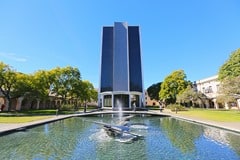As we recently reported[L1] , the US Patent and Trademark Office has published its , addressing computer-related claims that will not be deemed patent-eligible. Software and business method patents are increasingly under fire in the wake of the US Supreme Court’s 2014 decision in Alice Corporation Pty. Ltd. V. CLS Bank International, et al. Both the federal district courts and the Federal Circuit have issued a number of decisions finding computer-implemented technologies patent-ineligible.
A recent case out of the Central District of California goes against this trend. California Institute of Technology v. Hughes Communications Inc. involves a number of patents owned by the California Institute of Technology (Caltech). The patents are directed to a form of error correction code for electronic data transmission. Caltech sued Hughes, DISH Network, and others for patent infringement. Hughes moved for summary judgment on the grounds that the asserted claims were not patent-eligible.
According to the court’s decision, “The asserted claims focus on a particular form of error correction code, but the concerns underlying the patentability of these claims are the same concerns underlying the patentability of software generally.” The judge opined that the Supreme Court miss the opportunity to clarify computer software patentability in Alice:
Alice held only that abstract business methods do not become automatically patentable when implemented on a computer. Alice failed to answer this: when, if ever, do computer patents survive § 101?
The judge concluded, “Although the Supreme Court has never declared that software is patentable subject matter, software must be eligible under § 101. A bright-line rule against software patentability conflicts with the principle that courts should not read into the patent laws limitations and conditions which the legislature has not expressed.”
After a detailed discussion of determining patentability post-Alice, the judge ruled:
Despite being generally directed to abstract concepts, the asserted claims contain meaningful limitations that represent sufficiently inventive concepts… Although many of these limitations are mathematical algorithms, these algorithms are narrowly defined, and they are tied to a specific error correction process. These limitations are not necessary or obvious tools for achieving error correction, and they ensure that the claims do not preempt the field of error correction. The continuing eligibility of this patent will not preclude the use of other effective error correction techniques. Therefore, all of the asserted claims are patentable.
Although this is a district court case, and not binding outside the Central District of California, other courts may find this analysis persuasive. Alternatively, this line of reasoning may be struck down on appeal. We’ll just have to wait and see…


